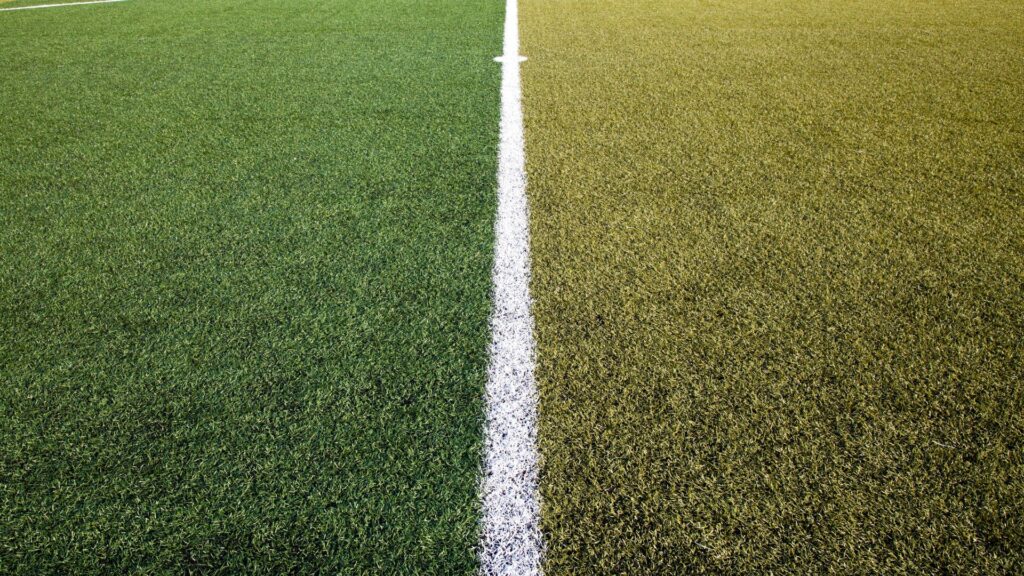Artificial Grass Drainage System is a crucial component in ensuring the optimal performance and longevity of synthetic turf surfaces. As an alternative to natural grass, artificial grass offers numerous benefits but requires a specialized system to manage water drainage effectively.
This system consists of various components, including a perforated base, sub-base, drainage pipes, infill materials, and proper surface grading. By efficiently channeling excess water away from the artificial grass surface, the drainage system prevents issues such as water logging and helps maintain a functional, visually appealing, and durable synthetic turf area.

The Importance of an Artificial Grass Drainage System
Artificial grass, despite its numerous advantages, requires a well-designed drainage system to effectively manage water. Unlike natural grass, which has soil and absorbent properties, synthetic turf lacks these natural drainage mechanisms. This makes it essential to have a proper drainage system in place to avoid issues like flooding, waterlogging, and potential damage to the turf.
An artificial grass drainage system serves a vital role in ensuring the longevity and functionality of synthetic turf. By efficiently directing water away from the surface, it helps prevent the accumulation of water that can lead to various problems. Without an adequate drainage system, excess water may pool on the artificial grass, creating a soggy and unstable surface.
Optimal Drainage Solutions for Artificial Grass
When it comes to ensuring effective drainage for artificial grass, there are several options available that can be tailored to specific needs and preferences. The best options for drainage include:
Perforated Base
A perforated base, typically made of geotextile fabric or a drainage mat, is a fundamental component of an artificial grass drainage system. It allows water to pass through the surface and prevents water buildup, ensuring efficient drainage.
Sub-Surface Drainage
Installing a sub-surface drainage system can significantly enhance water drainage. This involves incorporating perforated pipes or channels beneath the sub-base layer. These pipes collect excess water and direct it away from the artificial grass area, effectively preventing waterlogging.
French Drains
French drains are another effective option for artificial grass drainage. These consist of a trench filled with gravel or crushed stone and a perforated pipe. The trench is positioned in areas where water tends to accumulate, diverting the water away from the artificial grass surface.
Gravel or Stone Infill
Utilizing a gravel or stone infill in the artificial grass system can promote efficient drainage. The infill material allows water to permeate through the turf, preventing water from pooling on the surface.
Proper Sloping and Grading
Ensuring proper sloping and grading of the surface is crucial for effective drainage. The artificial grass should be installed with a slight slope that allows water to flow naturally toward designated drainage points or areas.
Regular Maintenance:
Regular maintenance practices are essential for maintaining optimal drainage. This includes removing debris, leaves, and other obstructions that could hinder water flow. Additionally, brushing the artificial grass periodically helps prevent matting and promotes better water drainage.
By considering these best options for drainage, artificial grass owners can create a reliable and efficient drainage system. Whether it’s using a perforated base, incorporating sub-surface drainage or French drains, utilizing gravel or stone infill, ensuring proper sloping and grading, or implementing regular maintenance practices, each option contributes to effective water management and a long-lasting artificial grass surface.

Evaluating the Effectiveness of Your Drainage System
Assessing the functionality of your artificial grass drainage system is crucial to maintain a healthy and long-lasting synthetic turf surface. Here are some key indicators to determine if your drainage system is working effectively.
First, observe how water disperses on the artificial grass surface after heavy rain or irrigation. A properly functioning drainage system should distribute water evenly without visible pooling or stagnant areas. Significant water accumulation or areas where water doesn’t drain indicate potential issues.
Next, check the speed at which water is absorbed by the turf. Efficient drainage allows water to rapidly permeate through the artificial grass surface and into the drainage components. If water sits on the surface or fails to penetrate the turf, it suggests a drainage problem.
Pay attention to the drying time of the artificial grass after rainfall or irrigation. Adequate drainage channels excess water away, reducing the drying time. If the turf remains wet for an extended period or takes too long to dry, it may indicate insufficient drainage.
Foul odors or the growth of algae or moss can be signs of poor drainage. Stagnant water can cause unpleasant odors and create a breeding ground for algae. If you notice persistent odors or algae growth, it suggests inadequate water flow and drainage.
Regular maintenance and proactive monitoring are essential to ensure the ongoing functionality of your artificial grass drainage system. By promptly addressing any drainage concerns and seeking professional advice when needed, you can maintain an efficient system that promotes proper water management and extends the life of your artificial grass surface
Final Thoughts
Ready to enhance your outdoor space with artificial grass? Partner with Custom Park experts to ensure a top-quality installation that includes a reliable and efficient drainage system. Don’t let poor drainage compromise the beauty and longevity of your artificial grass.
Contact us today to discuss your project, assess your drainage needs, and benefit from our expertise in creating functional and visually appealing outdoor surfaces. Let us help you create a vibrant and hassle-free outdoor environment with our expert artificial grass solutions.


